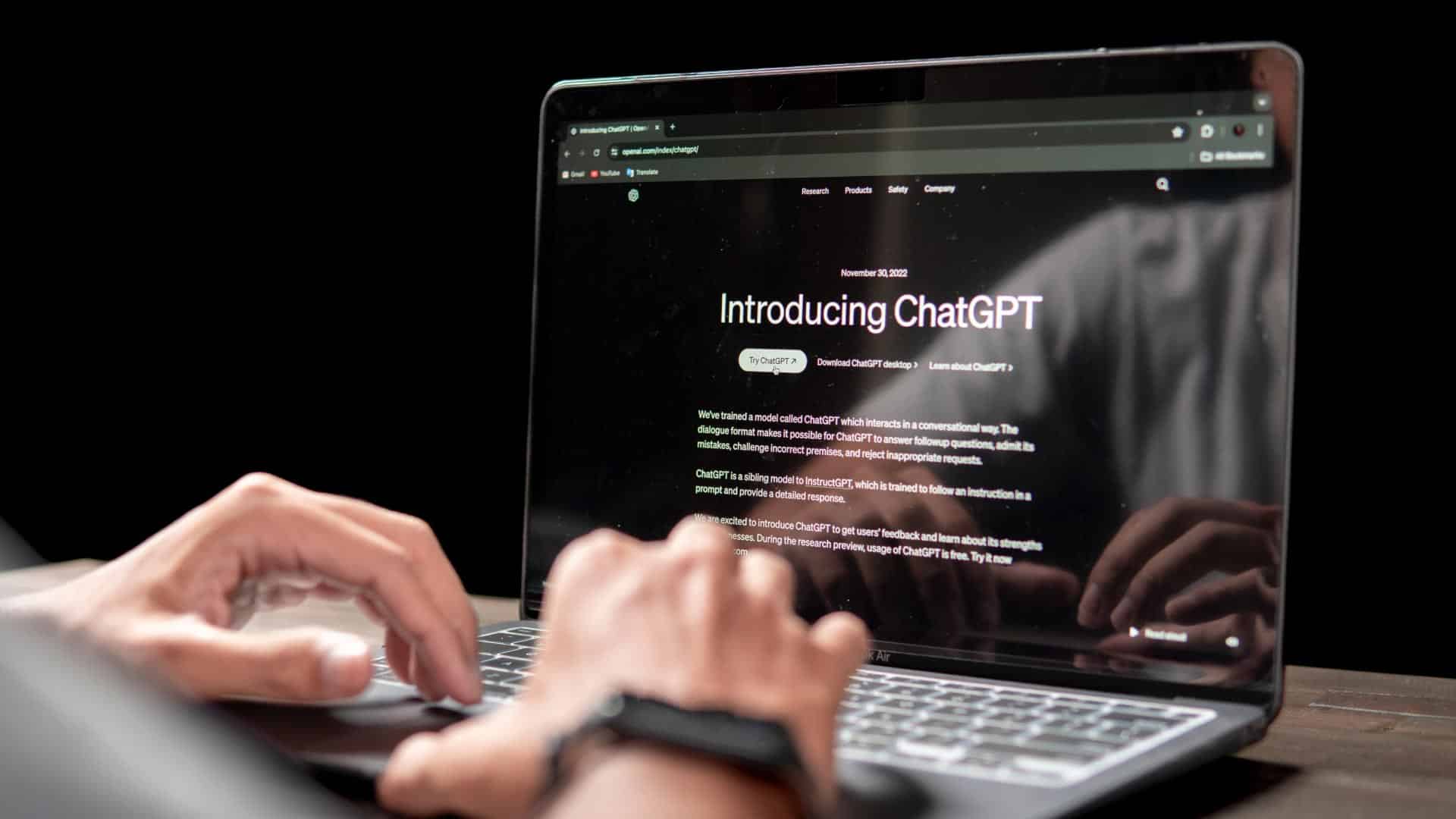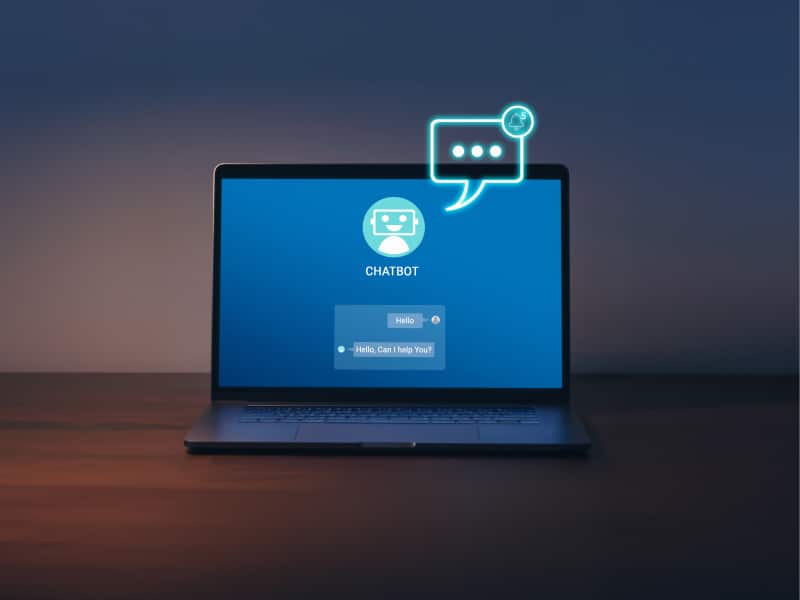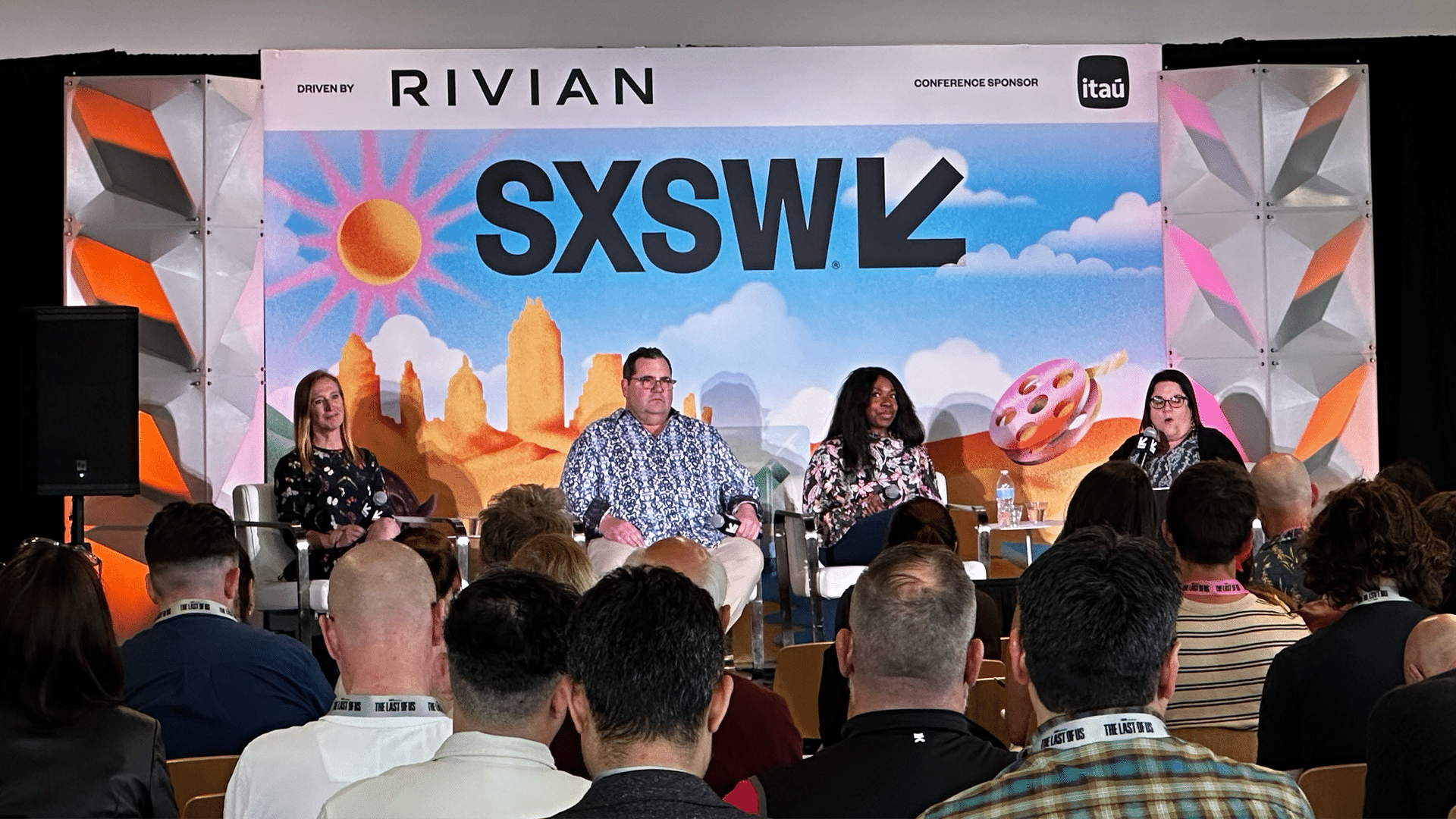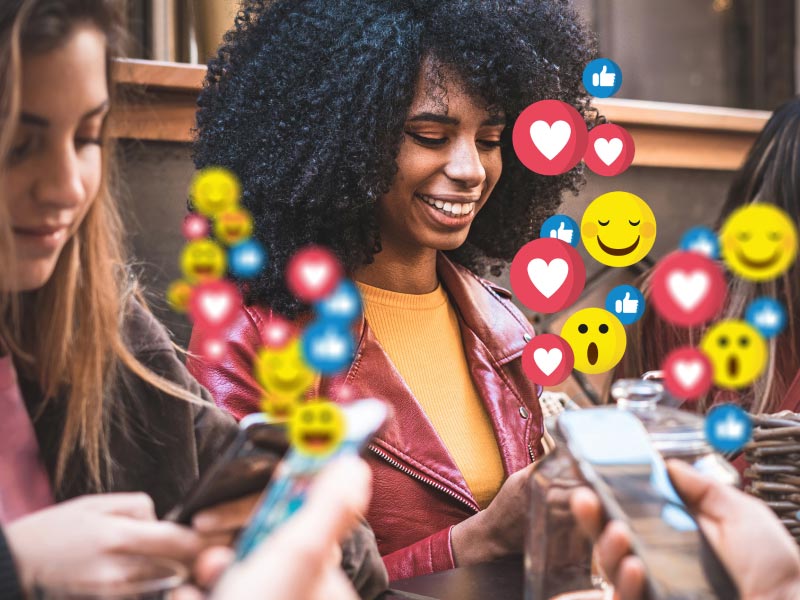At Mod Op, we’re no strangers to tight deadlines, evolving client needs, and the constant demand for fresh, brand-aligned storytelling. As a PR professional, staying ahead of the curve often means digging deeply into brand materials, mastering a client’s voice, and translating business objectives into meaningful narratives that resonate with media and audiences alike.
That’s why I was excited (and admittedly a little skeptical) – when I first started using Brand Agent, our in-house AI-powered tool.
Spoiler alert: It’s quickly become one of the most valuable resources in my toolkit.
Using Brand Agent in PR
PR teams juggle a wide range of tasks – many of which require a deep understanding of a brand’s identity and strategic goals. Brand Agent helps us accomplish more with less stress and greater accuracy.
1. Faster Media Preparation
For a product launch where we need to develop a full media kit, including talking points, executive bios, and supporting data, Brand Agent can be instrumental. Normally, this would require pulling from multiple sources, including past press releases, internal briefs, meeting notes, and more.
With Brand Agent, we simply upload the newest product documents, merge them with existing client data, and use natural language prompts to extract the exact insights needed. It can help PR teams create clear, concise messaging that reflects the brand’s voice and strategy without spending hours digging through past files. For example, we recently needed to combine two old bios for our client as well as new messaging to create a fresh bio that also highlighted a bit about the value proposition of the company. We were able to easily upload all the documents and Brand Agent provided a new bio that reflected the new messaging as well.
2. Real-Time Reactive Pitching
One of the more demanding aspects of media relations work in PR is reacting quickly to breaking news and trending topics. When an unexpected industry shift occurs, we often need to craft a quick POV for clients – something that is tied to the trend while staying aligned with their positioning.
Using Brand Agent, PR teams can quickly review how the client had previously spoken about similar topics and match it with current campaign messaging. Within minutes, the tool can help generate an on-brand response that is timely and relevant. And because Brand Agent provides access to historical talking points and tone guidance, we don’t need to pause to double-check phrasing or approvals before hitting send. For clients, using Brand Agent can help us turn around POVs three to four times faster than before.
3. Smarter Content Creation
Any PR person knows that drafting press releases or blog posts can be time-consuming. What Brand Agent offers is a starting point that reflects past content, brand tone, and messaging frameworks. For client thought leadership pieces, it can help repurpose existing research into a first draft that hits the right points and tone. Of course, editorial judgment and human polish is still needed, but it can drastically cut down writing time for PR pros.
Why Brand Agent is a Game-changer for PR
It Speeds Up Onboarding
Onboarding new clients is one of the most critical parts of agency life. In the past, it could take weeks to internalize a brand’s voice, its PR goals and competitive landscape. With Brand Agent, that process becomes dramatically more efficient. The PR team can ask questions like, “What are the client’s core brand pillars?” or “How did they position their product in the last campaign?” and get immediate, brand-informed answers. Using Brand Agent, junior team members can ramp up faster on client accounts while senior team members have more time to focus on strategic execution.
It Reduces Siloed Information
In any agency, knowledge can get stuck in silos – especially when it comes to old documents or even teams transitioning off accounts and losing that institutional knowledge base. Brand Agent democratizes access to brand knowledge across teams. PR teams no longer have to wait for an account lead or strategist to send over background on a campaign. This information can be easily accessed via Brand Agent, which understands the context and provides brand-aligned information.
It Enhances Quality and Consistency
Consistency is essential in PR, especially when we’re working with multiple teams and touchpoints. With Brand Agent, we know that client messaging aligns with what the creative team is producing, what the strategist is planning, and what the client expects. It ensures that every piece of content produced reinforces the same brand narrative.
Security and Trust Built In
One of the most common concerns about AI tools in our industry is data security. Clients are cautious about how and where their proprietary information is being used. With Brand Agent, we can assure clients that their data is secure. In this closed LLM, no client information is fed into open models. One of Brand Agent’s biggest differentiators is that it doesn’t train public systems, so access can be tightly controlled within our team.
Brand Agent hasn’t replaced the creative thinking, storytelling skills, or media instincts that are essential to PR, but it has elevated them. It has freed up time for deeper thinking and it can make PR work faster and more accurate, and our teams more confident in their output. And most importantly, Brand Agent will help PR pros deliver more consistent value to clients.
The Latest
We study the game as hard as we play it.
Learn with us what’s now and next.
Related Stories
Recently, I had the opportunity to help test a new AI platform at Mod Op called Brand Agent. Brand Agent is a large language model (LLM) that is extensively trained on client data and information to act as an information retrieval portal when asked pointed questions.
It was an interesting experience – not just because I got an inside look at how the platform functions, but because I played a role in coordinating the testing process, gathering insights, and helping shape how we might use Brand Agent internally in the future.
Getting the Right People Involved
When we kicked off testing, one of the first steps was ensuring we had a well-rounded group of testers. Since Brand Agent is designed to support various aspects of our work, we needed input from people across different parts of the agency – PR, strategy, creative, and more. Each of these teams interact with client data in unique ways, so it was important to have a diverse set of perspectives to get the full picture of what Brand Agent could do.
Once we identified our key testers, we made sure they understood what we were looking for in their feedback. We didn’t want the testing to feel like just another task to check off: we wanted it to be a meaningful experience that would actually help improve the platform. That meant setting clear expectations and making sure everyone was logging their findings consistently.
Watching the System in Action
One of the most fascinating parts of the process was seeing how Brand Agent handles data. Once testers selected which client they wanted to work with, we loaded the platform with relevant publicly accessible data. Seeing this in action made it clear just how much potential AI has in our industry, especially when it comes to making sense of large amounts of data quickly.
But, as with any new tool, Brand Agent needed refining. Some testers found certain functions intuitive, while others ran into roadblocks that highlighted areas for improvement. The feedback we gathered helped pinpoint what was working well and what needed to be tweaked to make Brand Agent more effective across different teams.
Turning Feedback into Action
At the end of the testing phase, I compiled all the insights into a wrap-up report. This wasn’t just about listing what people liked or didn’t like, it was about identifying patterns, surfacing key takeaways, and outlining next steps for making Brand Agent a more valuable internal tool.
One of the most valuable things we learned was how different teams approached the platform in their own ways. Creative teams, for example, were focused on brand guidelines and messaging insights, while strategists wanted a deeper dive into audience behavior. Understanding these nuances will be key in shaping how we refine Brand Agent moving forward.
Looking Ahead
Overall, this was a great experience – not just because I got to see an AI platform evolve in real time, but because it gave me a new perspective on how different teams within the agency interact with technology. The testing phase was just the beginning, and I’m excited to see how Brand Agent develops from here. There’s a lot of potential for AI to enhance the way we work, and I’m looking forward to seeing where we take Brand Agent next.
The Latest
We study the game as hard as we play it.
Learn with us what’s now and next.
Related Stories
This year at Mod Op, something interesting happened. Without much fanfare, we quietly introduced over 60 specialized AI teammates into our daily work. We call them Brand Agents – custom-built, brand-aware digital collaborators that help our teams do better work. No press releases, no grand proclamations about “revolutionizing” anything. Just steady progress toward making our clients unforgettable. Here’s the story.
What’s a Brand Agent, anyway?
Picture this: an AI assistant that knows everything about your brand – the guidelines, the history, the competitive landscape, all of it. Not just surface-level stuff, but the deep context that usually takes years to absorb. Unlike generic AI tools that know a little about everything, each Brand Agent is purpose-built for a specific client, steeped in their voice, visual identity, and strategic goals.
It’s like having a brand strategist, creative director, and data analyst rolled into one digital teammate – one that never sleeps, never gets tired of double-checking details, and can process mountains of information in seconds. And because security matters, each Brand Agent lives in our secure environment. No client data wandering off into public AI training sets.
Brand Agents learn and evolve alongside the brands they serve. As campaigns roll out, markets shift, and strategies pivot, BAs adapt, keeping their knowledge fresh and relevant. And unlike static brand guidelines that quickly become outdated, Brand Agents can be continuously updated with the latest campaign results, consumer feedback, and market research – ensuring everyone in the organization is working with the most current brand intelligence.
To be clear: Brand Agents aren’t here to replace human creativity or strategic thinking. They’re here to amplify it. By handling the heavy lifting of information retrieval, pattern recognition, and initial content generation, they free our teams to focus on what humans do best: the creative leaps and strategic insights that make brands unforgettable.
Context is Everything
We do a lot of exploring of new AI apps as part of our commitment to understanding and innovating agency work. And here’s one thing we’ve noticed: AI tools, backed by well-curated contextual information, are becoming a genuinely new way of getting good work done. And in advertising, when an AI really understands a brand’s history, voice, and goals, it transforms from a generic chatbot into something much more interesting – a specialized collaborator that can actually help create brand-aligned work.
This is an insight that grew out of Mod Op’s AI Playground. Through that initiative, we’ve been experimenting with tools like Google’s NotebookLM and Cursor (which, fun fact, is the fastest growing SaaS application ever). Through that experimentation, we saw an opportunity: what if we could collect all our brand knowledge and let our teams access it through simple chat? It could democratize brand expertise across our entire organization in ways that weren’t possible before.
And working this way wouldn’t just boost efficiency – it could elevate quality across the board. A junior copywriter could tap into brand understanding that used to take years to develop. A strategist could quickly explore multiple approaches grounded in the brand’s established positioning and pre-test it with a simulated focus group based on real audience data. A creative director can iterate rapidly while staying perfectly aligned with brand guidelines.
But doing this at an agency scale? That’s trickier. We needed something that could handle dozens of brand identities, provide secure access to team members with differing degrees of access – and fit seamlessly into our existing workflow.
So, we built it.
The Challenge
Here’s the thing about enterprise AI adoption: the biggest hurdle isn’t the technology itself, or even getting the data organized – it’s security. When we talked to our clients about AI, this came up again and again. And they’re right to worry.
Take the popular AI tools like ChatGPT and Claude. They operate on a simple deal: you feed them data, they use it to get smarter. Every conversation, every bit of proprietary information potentially becomes part of their training set. For agencies handling sensitive client information – unreleased products, marketing strategies, competitive analyses – that’s a non-starter.
Then there’s the hallucination problem. When an AI confidently presents fiction as fact, it’s more than just annoying – it’s dangerous. One wrong detail in a client presentation, one misquoted statistic, and you’ve got a mess on your hands. Generic AI tools, for all their capabilities, just don’t have the specialized knowledge to reliably support good agency work.
We needed something better: AI assistance without the security nightmares and reliability issues. We looked around, but couldn’t find it, so we built it ourselves. Enter Brand Agents.
Starting Fresh
Talk about “democratizing” access to information has become one of those empty tech buzzwords. But here’s where Brand Agent actually makes good on that promise: it fundamentally changes how knowledge flows through our agency, from day one of any client relationship. After all, when is solid intel on a new client brand more valuable than when we’re all getting to know each other?
Before we have our first presentation, we create a Brand Agent. We feed it a mix of publicly sourced research and agency insights, giving it a deep understanding of the client’s brand and a bit of our own POV. By the time we get together to brief the team, they can explore the client’s industry, competitors, and audience through natural conversation, getting answers that would normally require weeks of research or months of experience.
The result? First client meetings that feel like fifth meetings – focused on solutions rather than basic fact-finding. Skip the awkward getting-to-know-you phase and dive straight into the good stuff. And it just compounds from there.
AI Collaboration That Actually Works
In agency life, “I need more time to think” is generally met with “there isn’t any.” Now, there’s hope. Brand Agents can create breathing room that agency teams desperately need.
When a designer hits a wall, Brand Agent can suggest new directions based on brand history and audience insights. When a copywriter needs that perfect phrase, it can offer variations that keep the brand voice while exploring new territory. When an account manager gets that urgent client email at 5 PM, they can pull together a document in minutes instead of hours.
But here’s where it gets really interesting: Brand Agents break down traditional agency silos – the invisible walls between strategy, creative, media, tech, and account teams. Instead of islands of expertise connected by bridges of miscommunication, we have a central source of brand knowledge everyone can tap into. Junior team members don’t have to wait years to develop sophisticated strategic perspectives. Creative teams can explore consumer behaviors without waiting for formal research or needing to reach out to the media team for performance insights. Account managers can answer client questions that once required a round of internal emails. This isn’t just efficiency, it’s empowerment.
AI that Actually Delivers Value
Brand Agent represents something new in client-agency partnerships: AI that actually delivers value. By handling time-consuming research, tactical exploration and initial content development, we can focus more human energy on the creative and strategic work that will only matter more in 2025 and beyond. By aligning behind brand priorities and strategic objectives in everything we do, we deliver more value. In other words, we’re combining human creativity with technology to create that “unfair advantage” our clients come to us for.
And we’re just getting started.
The Latest
We study the game as hard as we play it.
Learn with us what’s now and next.
Related Stories
The advertising and marketing industries are experiencing unprecedented transformation, driven by technological innovation, shifting business priorities, and rapidly evolving consumer behaviors. Against this backdrop, I had the privilege of attending the inaugural Marketecture Live conference.
This timely event brought together influential thought leaders from across the adtech ecosystem for a full-day exploration of the industry’s most pressing challenges and opportunities. More importantly, it created a forum for much-needed, candid conversations about adtech’s future.
After reflecting on the many presentations and discussions, I walked away with three key observations about the industry and its future:
1. AI Must Deliver Real Value, Not Just Novelty
AI dominated many conversations at the conference, where a clear message emerged: AI is prompting industry-wide adaptation, but its implementation must be purposeful and strategic. The rapid evolution of AI capabilities is changing adtech quickly, yet speakers consistently emphasized that bringing it into existing workflows needs to make clear business sense and deliver tangible value to customers.
What stood out most was the contrast between companies implementing AI with clear purpose versus those rushing to market with AI features that don’t align with their core business models. This latter approach is creating confusion in the adtech landscape and resulting in subpar tools that don’t drive forward business outcomes for either the vendor or their clients.
The most compelling AI discussions centered around specific applications where the technology genuinely enhances capabilities, not as a vanity offering or marketing buzzword, but as a solution to real industry challenges.
2. Consolidation Is Creating Pathways to Stronger Mid-Market Players
One recurring topic at the conference was the ongoing consolidation within the industry. In fact, during one session the announcement hit that MediaOcean would merge recently acquired Innovid with Flashtalking under the Innovid name, signaling the strategic value of combining complementary capabilities.
Mod Op’s Chris Harihar touched on this consolidation trend during his session, noting how specific acquisitions are creating a more competitive ecosystem. These strategic combinations are fueling the growth of mid-sized adtech players that are merging to bring more robust, integrated offerings to the market.
This consolidation trend isn’t merely about creating larger entities—it’s about developing more comprehensive solutions that can better serve advertisers in an increasingly complex landscape.
3. The Industry Needs Solutions, Not Just Complaints
The most refreshing theme that emerged across several sessions was an industry-wide call for a more positive, solution-oriented outlook. As the adtech ecosystem evolves, adapts, and changes, challenges will inevitably arise. We’ve already seen this play out in debates over the open web versus walled gardens, identity solutions, and measurement standards.
Yet, throughout the day, speakers emphasized the need for the key players to come together to drive real change rather than simply identifying problems. The sentiment was clear: the industry has spent enough time complaining without bringing actual solutions to the table.
While the exact framework for this collaboration remains under development, Chris proposed the creation of a new organization focused specifically on addressing these shared challenges. This vision points to a future where the industry equally values cooperation alongside competition when facing transformative challenges.
Looking Forward
The path forward for adtech requires both innovation and collaboration. Companies that can implement AI in ways that deliver genuine value, participate strategically in industry consolidation, and contribute to collaborative problem-solving will be best positioned to thrive.
As the industry continues to navigate technology, privacy regulations, and consumer behavior, the message from the conference was clear: adaptation isn’t just about survival – it’s about creating a stronger, more sustainable ecosystem for advertisers, publishers, and technology providers alike.
The Latest
We study the game as hard as we play it.
Learn with us what’s now and next.
Related Stories
“Raise your hand if you’ve heard of treeing!” said Andy Roddick, former pro Tennis player and my high school celeb crush back in the day. I embarrassingly kept my hand down and surveyed the crowd in Austin to see who else was “in” on the lingo.
It’s a term often used in tennis (and now pickleball) to refer to someone playing above their skill set, but usually for a very limited time. Essentially, you’re successful, but it’s a fluke! As Andy and Brene Brown talked on his podcast, Served, they laughed about having both experienced ‘treeing’ until they were able to master that next skill that leveled up their play more consistently.
As a marketer, I sat with that notion, wondering for my brands and the trends that we so often try to keep up with. How do we know if we’re treeing or ready to push past it to the next level?
The great thing about SXSW is you can choose your own adventure. Marketing seminar, podcast recording, a 101 on office gossip, you name it, they have it. Beyond the sessions, your brain is spinning with creativity as you experience brand popups, new music, art installations and film. But on my journey, session after session, this thought stuck in my head.
Listening to market leaders talk about navigating their category to push past treeing and into the next arena of growth and adoption, I wondered, what was the secret sauce? What were the key trends among those that have pressed on beyond treeing to maximize potential?
Feel the feels. Jenny Whitlock of the NBA spoke about using new entry points and experiences to create future growth with new audiences for your brand. What do you call a feeling that is nostalgic for your core fanbase and yet completely new to a different audience or generation? Newstolgia. This macro trend is the key to unlocking emotional connection and core memories for fans across a variety of categories and generations. It opens up opportunities for teams to redefine what it means to fall in love with their brand.
Redefine the playbook. The playbook for spirits brands is tried and true. Follow the regulations, start in restaurants and bars, let them try it, then expand to retail. Kat Hantas of 21SEEDS told how their unconventional approach to distribution contributed to the success of the brand in the first three years, positioning them for great potential with an acquisition by Diageo.
Play to win. This may seem obvious, but as Brene Brown pointed out, there’s a big difference in playing to win vs playing not to lose. Her latest research on game theory examines the champion mindset and how winning teams navigate negative contagion by focusing on the next hit instead of avoiding the obstacles they face. What a great reminder to keep your eye on the prize instead of being distracted by the competition.
Meet your audience where they are… both in messaging and product development. My colleague Aimee Goldstein attended a number of sessions on this and contributes: “Consumers quickly detect insincere brand integrations. The key to success lies in listening rather than dictating, leveraging fandom and cultural affinities to create natural, meaningful connections. Social media is now a learning platform, where everyday people, not just polished celebrities, drive engagement through relatable experiences. Beyond marketing, product development should also reflect audience needs by identifying and filling gaps in the market. A prime example is Kin Euphorics, which created a non-alcoholic social beverage to satisfy unmet demand. By aligning both content and products with genuine consumer desires, brands can drive long-term growth, with new adopters and old fans alike, in a meaningful way.”
Consider how your business or brand can embrace these approaches to level up their game. We all want to punch above our weight and find success, but only if we prove consistent in that endeavor will we continue to grow and maybe even raise the stakes for others.
The Latest
We study the game as hard as we play it.
Learn with us what’s now and next.
Related Stories
NotebookLM is powered by Google and has received positive feedback from folks like Amanda Caswell of Tom’s Guide and Android Authority’s Matt Horne, yet many have never tried it.
So, for this next post in our AI tool series, made possible by Mod Op’s AI Playground, we’re looking at NotebookLM. We’ll explore two use cases and my overall thoughts on if, when and how marketers should be using NotebookLM.
What is NotebookLM?
Google describes NotebookLM as “an AI-powered tool designed to help users better understand and work with their documents.” The tool allows users to upload documents, after which “it can analyze and summarize them, answer questions based on the content, and help you generate new content.”
Google removed NotebookLM’s “experimental” status in fall 2024 and it’s now part of Google’s general-purpose AI model, Gemini.
NotebookLM: A Content Marketing Use Case
According to HubSpot’s State of AI Report 2024, 43% of marketers using AI tools use it for content creation. With so many tools able to quickly spit out grammatically correct, typo-free content, it’s certainly a tempting use case.
I first began experimenting with Notebook LM last fall, around the time we announced the launch of Mod Op’s first book, Getting Digital Done. The book presented a content opportunity: Owned source material for blogs, ebooks and other forms of content that could be used in content marketing and other thought leadership efforts.
The tactic of repurposing existing content for other marketing efforts isn’t new – it’s a foundational aspect of content marketing that’s also used for PR and other marketing disciplines. Before NotebookLM, or other AI tools, I would spend time reading – and re-reading – the chapter as I wrote new versions in other formats.
With NotebookLM, I was able to cut down the time it took me to version the piece, by following these six steps:
- Create a new workspace, also known as a “notebook,” in NotebookLM. I knew that I wanted to create a few pieces using this approach, so I named the notebook “Getting Digital Done.” This allowed me to easily return to the notebook to locate my content at different times during the project.
- Add sources to the notebook. I pulled in both the full transcript of the book and the press release about the book. Knowing that I wanted to write blog posts, I pulled in past blog posts to offer a sample of formatting. I wanted to attribute content to one of the book’s authors, Len Gilbert, so I gathered past writing from Len to provide additional examples of his voice.
- Draft a prompt. This step took some trial and error before we landed on a first draft. One aspect we has to troubleshoot was determining which elements of the book to include and which to omit. For example, Getting Digital Done relies heavily on a fictional company. While it works well in the context of the book, in the short-form blog posts, it was confusing.
- Review the first draft and make edits. Once we settled on a draft with the right focus and format, I reviewed it for grammar, spelling, voice, tone, and SEO. I also considered how it positioned Mod Op, our experts, and the book, making manual adjustments to the piece as needed.
- Share the draft for review and feedback. Following my review and edits, I shared the piece with Len for his review and feedback. Because NotebookLM allowed me to tweak things like tone and format easily – and because Len is a great advocate for our AI Playground – I actually shared two versions of our first blog post. That led to some really helpful feedback I could apply to our first blog post and use to refine our prompt.
- Repeat! We used this method for a few blog posts, including “Becoming Digital: Technology Comes Last” and “The Power of an Outside-In Approach: How Understanding Your Customers Drives Digital Transformation Success.”
NotebookLM Use Case #2: Summarizing Interviews
Mod Op Chief Strategy Officer Jonathan Murray also tested NotebookLM as part of Mod Op’s AI Playground. (You can listen to Jonathan’s full overview on the Leader Generation podcast episode, “AI Playground: Microsoft Copilot & Google NotebookLM”).
In his use case, Jonathan and his team needed to review client interviews to create structured summaries and insights. As Jonathan explains, the team “had hours and hours of interviews and we had taken the transcript of those interviews. Normally we would go through the transcripts and manually extract the insights from those and, the observations from the interviews and [provide] our recommendations.”
In this case, Jonathan reports that by using NotebookLM to review the transcripts, the team was able to cut the task time by 75%. “We were able to upload the transcripts from the interviews and then have NotebookLM do all of the summarization to derive insights and to answer specific questions to provide guidance to the client.”
Should Marketers Use NotebookLM?
As a marketer, there’s a lot to consider when determining if you should use an AI tool, including data privacy, security, legal considerations, and ethical factors. It’s also important to consider problem and purpose alignment: does the AI application effectively address a specific problem relevant to your organization’s needs and goals?
From a security standpoint, NotebookLM does quite well. It’s a key factor when dealing with proprietary information and something Jonathan was quick to touch on in his review: “This model, when you upload your source material, it’s private to you. You can share your notebooks with other people, but other than that, the material stays where it is. It doesn’t get ingested by Google, and it doesn’t get reused, for the purposes of other customers. So, it’s privacy safe, and it’s very interactive.”
From a problem and purpose alignment standpoint, the answer to “should marketers use NotebookLM?” can vary.
Would I use NotebookLM to version content again? It depends. As with Jonathan’s use case, I think NotebookLM is a great tool for taking existing material – book transcripts or interview transcripts – and summarizing them. However, when you look to take it a step further by creating new marketing content, the results are mixed.
Although we produced blog posts that satisfied both me and the author using NotebookLM, some final posts still appeared as AI-generated to a trained eye (or AI tool). Even with a good deal of human oversight and editing, Copyleaks, a leading AI text analysis platform, estimated that one of the blogs we created and published was as much as 98.8% AI-generated.
In closing, NotebookML is a powerful AI tool backed by one of the world’s leading tech companies. It offers a secure AI solution for quickly reviewing and summarizing content, giving you tools to transition the content into new formats. If you’re a content marketer, it’s worth taking a look!
Interested in learning more about the apps we’re testing at Mod Op? Check out the Mod Op AI Playground and make sure to check out Mod Op’s Leader Generation podcast for special AI Playground episodes.
The Latest
We study the game as hard as we play it.
Learn with us what’s now and next.
Related Stories
At Mod Op, our years of experience in the agricultural sector have given us a keen appreciation for the resilience of America’s farmers. It’s just in their DNA. But today, farmers, ranchers and dairy producers are grappling with a bushel of challenges, including drought and water availability, high input costs and profit pressure, regulatory and environmental challenges, labor shortages, trade uncertainty, and general market volatility.
As if that weren’t enough, farmers are constantly bombarded by content, messaging and advertising. For National Ag Day, we wanted to look at ways for brands to effectively reach farmers, and what they need to understand about the demands facing agriculture as well as the opportunities they offer.
Challenges Facing Farmers
First of all, there’s the weather. Our key agricultural regions, including the Great Plains, California, and the Southwest, continue to face ongoing drought conditions and water restrictions that negatively impact production.
Rising input costs for fertilizer, fuel, seed, and crop protection products also cut into profit margins. Livestock producers are feeling the pinch, too, thanks to high feed costs. And as interest rates have climbed, it’s more expensive to finance equipment, land and operating loans.
Regulatory and environmental pressures around pesticide use, fertilizer application, and emission are also impacting farmers. Carbon credit programs and sustainability initiatives present challenges and opportunities for producers while WOTUS (Waters of the U.S.) and similar policies create uncertainty.
Then there’s the shrinking, aging labor pool, especially for seasonal and skilled farm workers, that drives up wages and reduces operational efficiency. H-2A visa program complexities and uncertainty around immigration policies are constricting the availability of farm labor.
Next to weather, timing is everything in ag marketing
Marketers wanting to reach farmers need to appreciate the cyclical nature of their business, as well as its complexity and sophistication. Fluctuations in grain and livestock prices require daily monitoring and make long-term planning difficult. Trade disputes, export restrictions, and shifting consumer demand also impact exports, especially in Canada, Mexico, and China.
When prices drop, farmers will scale back on spending, but when commodity prices are high, they’re more likely to reinvest in equipment, technology, land, and labor.
From an equipment and technology standpoint, innovative solutions are constantly being developed and brought to the market to help farmers improve the efficiency and profitability of their operations, while protecting their business for future generations.
Opportunities for Brands
Unprecedented growth has lured a new generation of entrepreneurs and investors who are offering innovative solutions to help farmers, ranchers and dairy producers become more profitable.
Ag-tech startups have flocked to agriculture with solutions that help producers overcome water use restrictions with drought-tolerant crops and precision irrigation systems, for example.
But the most fruitful opportunity for innovation may lie in farm data. Not wanting to be left out, mature tech companies like Microsoft and Amazon are muscling into the ag-tech space, helping farmers turn the volumes of information they collect into actionable insights. Microsoft’s Azure Data Manager for Agriculture is just one example; it provides industry-specific capabilities to connect farm data, enabling organizations to use high-quality datasets and develop solutions that power agriculture insights.
The integration of advanced technologies including artificial intelligence (AI), machine learning, the Internet of Things (IoT), robotics, and data analytics makes it possible for ag-tech startups to thrive while giving investors incredible opportunities. These technologies enable solutions that address critical challenges in farming, including labor, food production efficiency, sustainability, and resource management. Tech companies and brands focused on solving these problems are positioned to drive substantial changes in the ways farmers and ranchers operate.
Farmers’ Changing Media Habits
To keep pace with the changes and challenges they face, farmers have altered their media consumption habits. Like everyone, they’ve increasingly integrated more digital platforms into their daily routines. This shift reflects a broader trend toward technology adoption in agriculture, influencing how farmers access information, engage with communities, and market their products.
Social Media’s Popularity
Brands wanting to reach today’s farmers, ranchers and dairy producers have more platforms and media outlets than ever.
Farmers are on major social media platforms to share their experiences, educate the public and connect with peers. YouTube, Facebook, TikTok and Instagram are popular for highlighting daily farming activities and fostering community engagement.
While they may still regularly visit the coffee shop to talk politics and markets, the adoption of smartphones and tablets among farmers offers them instant access to information and digital tools. Most can put autonomous farm equipment in motion, sell grain or livestock, buy land, or purchase farm equipment and supplies from apps on their mobile phone or tablets. They view weather forecasts, get soil sample results, read market commentary, and keep up with current events from these same devices. Access to information for them to make their business decisions has never been more plentiful, but it has evolved.
Video is Preferred
Video content has become the preferred medium for farmers seeking information and entertainment. A 2022 study by Successful Farming revealed 90% of farmers watch short online videos, including news, sports highlights, how-to guides and product reviews.
Audio content, including podcasts and other streaming programs, has also seen increased adoption among farmers of all ages. Some things, however, have remained the same. Take farm radio for example. Farm broadcasters remain one of the most trusted go-to resources for local farm news, weather, and markets.
Cultivate by Mod Op
Mod Op’s commitment to agriculture runs deep. We’ve collaborated with notable companies like John Deere, Nutrien, Earth Optics, Phospholutions, PBI Gordon, Rosen’s, Norbrook, Agrievolution, and Adams Land and Cattle. In response to the increased sophistication of farming and the evolving trade media landscape in the sector, we’ve launched Cultivate by Mod Op, a specialized division offering comprehensive digital marketing solutions tailored for the business of agriculture. Cultivate enables agricultural companies and brands to access a fully integrated suite of marketing services essential for success in today’s market, including building brand identity, developing product packaging, launching innovative campaigns, and engaging key stakeholders effectively.
As agriculture has become increasingly tech-forward, Mod Op is merging innovative digital tools with deep industry expertise to help agriculture companies harness innovation and maintain competitiveness. From data and AI-powered strategy recommendations to creative storytelling, Cultivate helps clients navigate the complexities of the digital environment and highlight technology leadership.
As Mod Op CEO Eric Bertrand explains, Cultivate represents a strategic move by Mod Op that reflects a broader trend in agricultural trade media. Agencies are adapting to meet the industry’s demand for data insights and sophisticated digital marketing strategies. By offering tailored solutions through Cultivate, Mod Op is positioning itself as a leader in this rapidly evolving sector, helping clients adapt and thrive against a complex landscape that is ripe for innovation.
The Latest
We study the game as hard as we play it.
Learn with us what’s now and next.
Marketing is a balancing act. Lean too far into authenticity and relevance, and you might create content that wins hearts but not conversions. Focus too much on key performance indicators (KPIs), and you risk churning out robotic, sales-first messaging that alienates your audience. The magic happens when you find that sweet spot – where your brand feels real, resonates with your audience, and still meets business objectives.
Here’s the challenge: the marketing funnel isn’t linear, guiding consumers straight from awareness to conversion. People zigzag, loop back, and sometimes drop off completely. This means your content and ad placement strategy need to be in sync, ready for all the twists and turns along the way.
If you create an emotionally compelling video but place it in an ad slot that is getting an average viewership of 4 seconds, your masterpiece won’t get the standing ovation it deserves. It would be like dropping a Taylor Swift album on a random Tuesday without a single Easter egg teaser; your audience just isn’t primed for it. Instead, you have to meet your audience where they are, in a format they’ll engage with, and in a way that makes sense for your business goals. And the way to find out what that is: data.
If you’re thinking, “sounds great in theory, but how do I actually make that happen?” I’m so glad you asked! Taking it from the top, media and creative should not live in silos. As with so much in marketing, a collaborative approach is going to put you in the best starting position.
Once programs are live, this is where the fun really begins. Testing isn’t a one-and-done activity; it’s a continuous process of trial, error, and adaptation. What works on Instagram Reels might flop on TikTok, despite the ad placements having nearly identical specs. Or a clever, quirky tone could land perfectly with one demographic but feel off-putting to another. By analyzing performance data and paying close attention to what actually resonates, you can refine your approach and build trust over time.
And you don’t have to wait till the next campaign to apply what you learn. In the world of digital marketing, there are many dials that you can turn in real time: this content’s crushing it for a particular audience in this placement – let’s put more dollars behind it. Another piece of content is generating lower-funnel activity in an awareness campaign – let’s see what it can do in retargeting programs. This top performing piece of content is finally starting to hit creative fatigue – let’s try to refresh.
At the end of the day, authenticity and placement strategy should go hand-in-hand. The best brands know how to be both relatable and results-driven and will use data as a means of getting there. What we know today will always be more than we knew yesterday; an active, fluid approach will make the biggest impact. When you align storytelling with placement strategy, and relevance with real metrics, you create marketing that feels good and delivers. And that’s a KPI worth celebrating.
The Latest
We study the game as hard as we play it.
Learn with us what’s now and next.
Related Stories
It takes less than a minute for Midjourney to generate and spit out an image. But is an image generated with AI as “creative” as one made by a skilled graphic designer? Does it matter? What do apps like Midjourney mean for the future of art and design?
In this AI app-focused blog series, we’re looking at the synergy between AI and human creativity, focusing on how generative AI tools can fuel and enhance creative processes — rather than replace them.
Next up in our AI tools series: Midjourney.
Our reviews are made possible by Mod Op’s AI Playground — an initiative designed to fast-track innovation by allowing team members to experiment with new AI tools quickly and responsibly. When a Mod Op-er finds a promising app, they can submit it. If the application passes our rigorous AI risk and compliance framework, the IT team will assist in setting up a 90-day evaluation period, during which users provide insights on the app’s value. If the application doesn’t pass our risk and compliance framework, we may choose to still move forward with testing, using the vetting framework to create very specific responsible use guardrails. (Spoiler alert: Midjourney did not our team’s risk and compliance framework pass, more on that in a bit.)
What is Midjourney?
Midjourney is an AI tool that generates images from text descriptions. According to ChatGPT, Midjourney “works similarly to other AI-driven image generation models like DALL·E (by OpenAI) and Stable Diffusion. Users can input descriptive prompts, and Midjourney will interpret those prompts to create highly detailed and often visually stunning images.”
Other AI image generation tools include Craiyon, Adobe Firefly, Lenardo.Ai and Bing Image Creator.
How Creatives Can Use Midjourney: Q&A with Aaron Grando
I connected with Aaron Grando, the Technology Director for our award-winning creative team, to learn more about how the team is using Midjourney and where he sees opportunities for the future.
Would you mind sharing a little about how the team is using Midjourney?
First off, it’s important to note that for many projects and brands, AI-generated images from Midjourney are not appropriate to use, for several reasons.
Most importantly, we prioritize good judgement and respect for a client’s product and audience. Take entertainment brands and properties – to the artists that work on them and those that enjoy them – the (conscious or subconscious) value assigned to intellectual property is based on the human point of view, creativity, technique and effort required to produce the final work. So, as marketers, we respect what audiences value about these properties. And it’s clear right now that many audiences are not keen on AI-generated artwork being in the marketing toolkits for many of these brands.
But we have a lot of clients, and many are interested more in speed to market and the impact of the creative. Some even ask us, “Can’t you just AI that?” in cases where we might traditionally spend hours Photoshopping artwork together. For those clients, we’re happy to say “yes – we can.”
This is where our AI Responsible Use Policy kicks in. It helps us understand the outer edges of the creative sandbox where we play but gives us room to experiment and push boundaries. In practice, this means that for a lot of photo and video production, we’re doing some pre-vis work with Midjourney-generated images. Those images are generally not made public, but they help us put together sets, props, costumes, and more as we’re working on creating content that is ultimately released. We’re also increasingly finding use for Midjourney assets in a similar way to how we’ve used stock photography in the past. Which is to say, almost never wholly using stock images, but rather elements from those generated images combined with other visuals – sometimes photographed stock, brand assets, or other AI-generated images – to create final compositions.
Responsible use is so important. Beyond the reasons you’ve already shared, are there other reasons the team tends to reserve Midjourney for pre-production work?
Pre-pro represents the majority of our Midjourney usage at this point, for the reasons mentioned above, but also for simple practical reasons. Midjourney isn’t built into the tools we use day to day, it lives (primarily) in Discord, an app that is still a bit foreign to many creatives.
The images Midjourney generates can be amazing, but they still tend to “feel” AI-generated, which is not an impression we want to give with our work. And, at the moment, Midjourney isn’t great at reproducing images of consumer products in a way that works for marketing, where using accurate depictions are important for consumer trust.
What are your top reasons for using Midjourney?
Midjourney gives teams ways to imagine very specific concepts in mostly polished, highly believable visualizations. In our testing, it produces more aesthetically pleasing images than most, if not all, of its competitors. And dare I say, it’s fun to spin the image generator roulette wheel and see what you get.
What, if anything, can you share about Midjourney and how it impacts speed and turnaround time?
That “roulette wheel” effect is real – it’s still a gamble that usable imagery can be generated more quickly than simply using traditional tools like Photoshop to comp together usable artwork. When it works, it can produce great-looking photo and art assets very quickly. When it doesn’t work, you may burn an hour or longer generating image after image, chasing the perfect iteration, but wind up with nothing that perfectly hits the mark. It’s a concern with all AI-generated content.
How do you expect creatives to leverage AI art generation tools, like Midjourney, in the future?
Short term, I’m looking forward to more integration with traditional design tools, like Figma and Photoshop – I expect that Midjourney at some point will move in that direction. Right now, the copy-and-paste workflow that it demands represents a lot of unnecessary friction.
Medium term, model-agnostic LoRAs or embeddings – chunks of data that tells an AI image generator how to perfectly generate an image of a specific person, place or thing – will start to show up among the assets exchanged between clients and agencies, similar to how 3D objects and high-resolution product photography are currently exchanged. These will let creatives generate images that convincingly integrate client goods directly into the scene, as opposed to needing to ‘shop them into place after generation.
Longer term, I expect that the ability to direct scenes in Midjourney will increase and expand beyond text prompting and region editing (which lets you regenerate sections of generated images). Midjourney has already previewed 3D environments using its technology, so it’s not a stretch to imagine that generated 3D scenes could fed back into the machine to allow creatives to control camera positioning, object placement, lighting, visual effects, and more.
A Word of Caution about Midjourney
While the team’s exploration of Midjourney was made possible by our AI Playground, it’s important to note that the app did not ultimately fall within our risk and compliance framework.
To better understand why, I reached out to Patty Parobek, Mod Op’s VP, AI Transformation, who explained the many reasons that Midjourney didn’t pass our tests:
- Lack of assurances that inputs are excluded from training data
- Unclear sourcing and licensing of training data
- Broad licensing claims over user inputs and outputs, creating potential IP and confidentiality risks
- No safeguards to prevent IP infringement in outputs
“That said, through the playground, we can use the vetting framework to create very specific responsible-use guardrails that a user must sign off on before we grant access,” explains Patty. “In this case, Midjourney is only allowed to be used internally or in ‘sandboxing’, unless we have a specific client who acknowledges the risks and says, ‘I know the risks, let’s do it anyway.’”
Interested in applying AI to your creative process, but aren’t sure where to start? Want to learn more about how our team qualifies – and disqualifies apps? Get more insights on the AI applications tested by our team, check out Mod Op’s AI playground.
The Latest
We study the game as hard as we play it.
Learn with us what’s now and next.
Related Stories
The U.S. government thought it could strongarm TikTok into selling to an American company, but TikTok called its bluff. Maybe a sale will still happen, but the recent drama only signals the immense value of the platform.
Yet TikTok’s monetary value is the least of it. The true power of social platforms today lies in their ability to shape the narrative, influence the zeitgeist, and set the trends. And yeah, on TikTok most of those trends involve cats, or silly dances, or cats doing silly dances, but the power to impact culture is what’s really at stake.
Before TikTok, there was Television
Television used to hold that power. Malcolm Gladwell brings two examples in his latest book “Revenge of the Tipping Point”. He posits that “The Holocaust” TV series on NBC in 1978 (watched by 120 million Americans) brought that event, and the term itself, into the collective consciousness and directly led to the establishment of museums throughout the country. Similarly, “Will & Grace” which ran for 8 seasons starting in 1998 (246 episodes, watched by 10-18 million Americans each) catapulted gay marriage from an issue that even advocates thought was decades off, to the standard across all 50 states less then 10 years after the series ended.
Television has, of course, fragmented since that time, and in a way that would be wholly unrecognizable to the audience of 1978. The top TV show this month is Chicago Med with 6 million viewers. Long gone are the days of 120 million viewers. But you know what 170 million Americans spend an average of an hour a day watching in 2025? TikTok. Of course they aren’t all watching the same thing, but it’s not all dancing cats either. According to Pew Research, 39% of adults under 30 say they regularly get news from TikTok.
Malcolm Gladwell uses the term “overstory” to describe a meta-narrative that shapes how people think and behave. Theoretically, whoever controls TikTok and the other massive social platforms can impact how stories are created and spread, and that can have a powerful influence on society. Overstories can shape how people think about the world.
But why the term “overstory”? It’s a metaphor referring to the highest layer of tree-canopy coverage, “way up in the air, in many cases outside our awareness”. And that’s why it is so powerful. Look no further than the fact that Chinese App “RedNote” hit #1 in the app store this week. The true impact these platforms can have is “way up in the air”, the overstory, outside of most Americans’ awareness.
But much like television, and more recently, podcasts and streaming services, the fragmentation will also come to social media – hastened by the threat, and momentary reality, of the TikTok ban. Trump realized this and threw his hat in the ring with Truth Social. The slow devolving of Twitter has led to Threads, Bluesky, Mastodon, etc. On the photo and video side, YouTube Shorts, Lemon8, Neptune, Flashes, etc. are all vying for user attention.
What Social Media Fragmentation Means for Your Brand’s Social Strategy
We stand on the precipice of this inevitable social media fragmentation, a new tipping point, if you will. It will lead to the rise of more specialized platforms catering to distinct audiences. We’ll see more dedicated spaces for communities centered around particular interests, hobbies, and ideologies, and potentially even open-source social spaces (Bluesky, Mastodon and Pixelfed as examples). For smart brands, one-size-fits-all content has already evolved into platform-specific strategies, but the future will require an even more nuanced approach.
This will make social strategy more complex, but also more necessary. Much like paid media channels, it will become more about putting the right message in the right place to reach the right audience, instead of just programming content for the same 3-5 social channels for every brand.
Therefore, audience targeting will become more crucial, requiring a deep understanding of each platform’s user base and culture. Niche platforms will undoubtedly each develop their own unique tone, style and engagement practices. Brands will need to craft messages that resonate authentically in a specific context. But this same fragmentation will offer opportunities to engage more deeply and build stronger connections. Let this tipping point be a call to brands to dive deeper into social strategy and understanding.
While the potential TikTok ban has accelerated social media’s fragmentation, it is by no means the only driver in a race to impact, and even control, the overstory. The battle to shape the norms and narratives that influence the behavior of Americans is being waged now, and brands should pay attention.
The Latest
We study the game as hard as we play it.
Learn with us what’s now and next.























